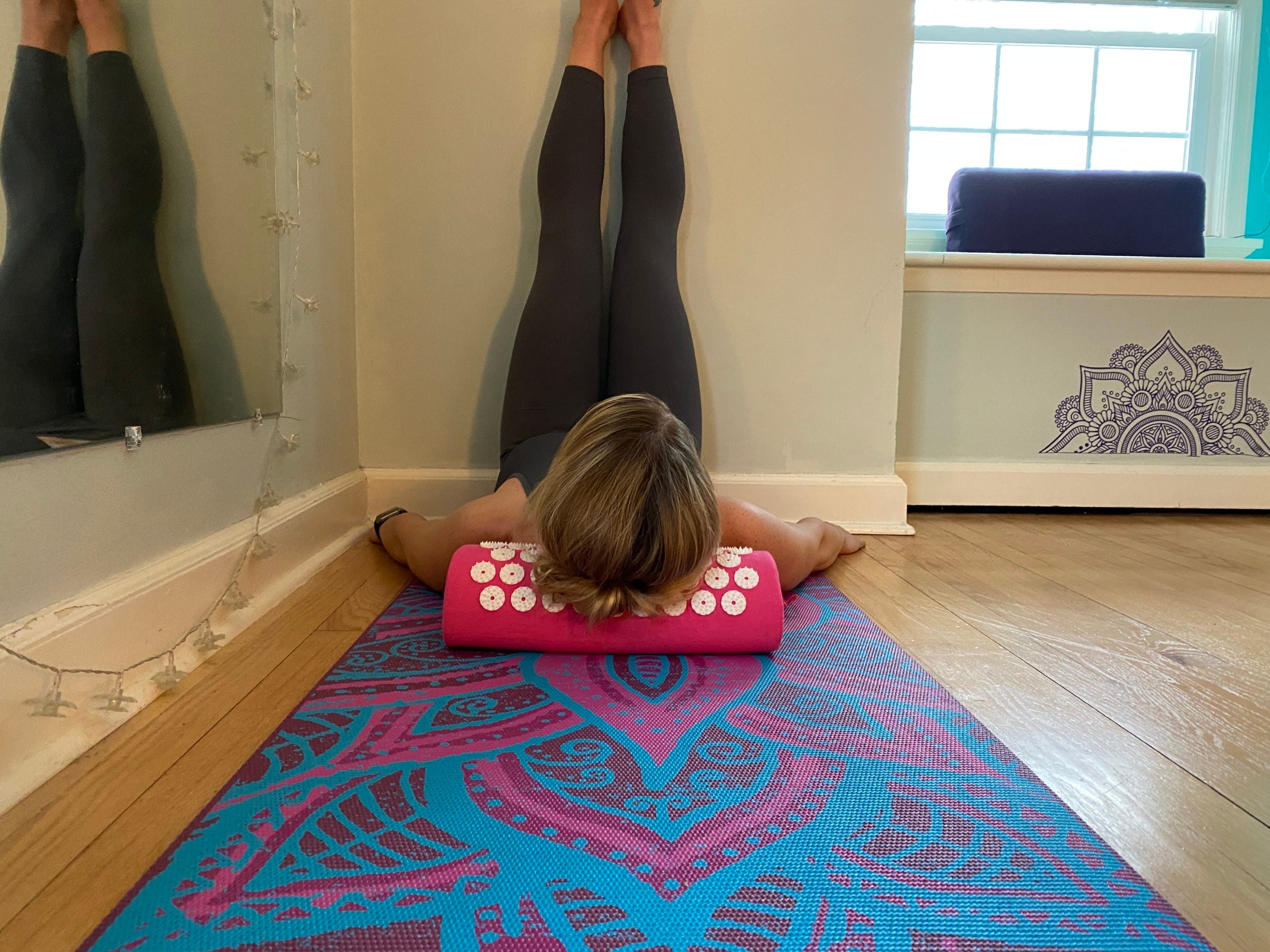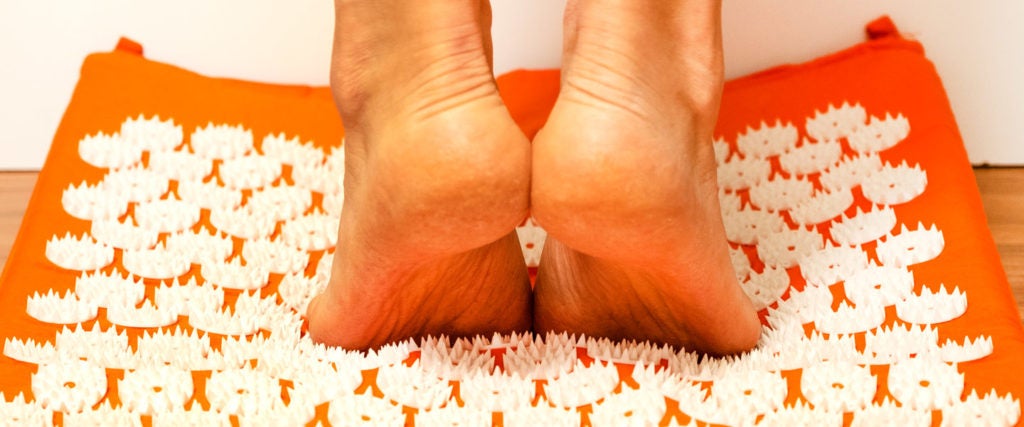When Jamie Hickey, a 41-year-old personal trainer in Philadelphia, told his wife he needed to dip away for 15 minutes to lie down on a “spike pad,” she was skeptical. “She thought I was making it up to get alone time away from her and the kids,” Hickey explains.
To his wife’s credit, the whole thing does sound made-up — like an excuse to watch Netflix on your phone in the bathroom. This so-called spike pad, officially known as an “acupressure mat,” is basically a modern-day bed of nails.
Which, yeah, why in the hell would someone willingly submit themselves to that kind of agony?
Hickey himself was unconvinced when a colleague recommended he try lying down on the spike pad to alleviate some nagging neck pain. “I started to zone out and dismiss it when she began talking about how they release the blocked chi in your body,” he says. “But then she brought hers in and had me lie on it, and I was sold.”
This spike pad has done the unthinkable: made my back relax!!! pic.twitter.com/rpBhLYdSVe
— jess (@hell__rat) December 5, 2020
Over the past decade, acupressure mats have become a hot commodity in the yoga community given their billing as, basically, DIY acupressure. Unlike traditional acupressure, which pinpoints specific problem areas, acupressure mats canvass the entire area with needles. And while there isn’t a ton of scientific research to back up the claims that tend to flirt with miracle-cure territory, the travel-sized bed of nails certainly has a loyal following.
To that end, Hickey remains skeptical as to whether the tiny spikes work by rushing blood to his back and endorphins to his brain, or if he “really ‘unblocked the chi’ in my body.” “But I do know that it made me feel a lot better,” he tells me.
Caitlin Moyer, a 37-year-old in Milwaukee, spent years exhausting myriad solutions to her frequent bouts of debilitating back pain. As a flyer, she bought an acupressure mat thinking that if it worked, it might be — at the very least — an inexpensive, portable route to short-term relief. “I remember feeling apprehensive at first and thinking the experience was more painful than I’d anticipated,” she says. “But once my body slowly got used to the sensation, I was able to work up to longer periods of time on my mat and even to direct contact with my skin.”
Her daily acupressure-mat sessions, along with becoming a registered yoga instructor, have largely cut down on her back problems. And when she is in pain, the spike pad seemingly trades one type of discomfort for another. “I’ve read several articles on ‘pain distraction theory,’” Moyer says, “so maybe the focus on the new pain distracts you from the rest of your thoughts and other muscle aches and lets you truly relax.”
“These days, I like to wind down my evenings by doing some yoga stretches and then use my acupressure mat,” she continues. “I can’t tell you how many times I’ve fallen asleep on the mat, legs up the wall and all, sometimes a book across my chest.”

As for Hickey, it would take a bit longer for him to convince his wife that the pain of lying on the spike pad alleviated his aching back and neck. “Then one weekend she got what’s known as ‘text neck,’ so I showed her what to do,” he tells me. “And now I think she’s the one using it as an excuse to get quiet time every night.”

